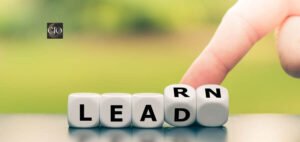While in otherwise abstract and theoretical mathematics, the human story behind the numbers and symbols is not visible, in recent years there has been a strong literary renaissance—Contemporary Mathematical Memoirs—that are breathing life into otherwise dry mathematics. These books weave together the professional and personal life of mathematicians, revealing to us a glimpse of their existence, their struggles, desires, and otherwise concealed humanity that makes them scholars.
These memoirs are proof of professional identity formation with extremely personalized voice, pointing to a new genre to reach both general readers and academics.
The Birth of a New Genre
Modern Mathematical Memoirs are quite recent, gaining momentum as mathematicians more and more use narration to express their lives. Mathematics has traditionally been expressed in the form of theorems, proofs, and papers heavy on formality. But memoirs like “The Man Who Knew Infinity” (on Srinivasa Ramanujan) or Edward Frenkel’s “Love and Math” have brought readers into a new, more intimate way of conveying knowledge—tall stories making the math process and the math people more human.
These texts offer more than anecdotal enjoyment; they are bridging between mathematical rigor of reason and the affective landscape of experienced life. They are concerned with the construction of professional identity, tracing a mathematician’s journey through times of doubt, tenacity, inspiration, and eventually, breakthrough.
The Crafting of Professional Identity
At the center of Contemporary Mathematical Memoirs lies the definition of professional identity—not static but evolving, forming. The memoirs usually begin in humble origins, with accounts of childhood interests, early arithmetic difficulties, or managers who ignited long-term passion. The narrative then runs along with school achievement, research breakthroughs, and disappointing setbacks that outline any profession.
It is of great importance in the shaping of professional identity. Mathematicians, no less than artists or writers, typically struggle with imposter syndrome, isolation, or public perception of their profession. Memoirs provide a stage on which to argue against such adversities realistically. Cathy O’Neil’s “Weapons of Math Destruction,” for example, speaks to her transition from pure mathematics to data science and policy and the building of her working self as a response to ethical and moral issues. These memoirs help readers, especially young readers, understand that math identity is not made by equations, but by choices, ethics, and growing as a human being.
The Emergence of Personal Voice
Within an often objectivizing and exacting discipline, Contemporary Mathematical Memoirs’ own personal voice is refreshing and exciting. In their first-person narratives, the books place readers in the mathematician’s inner world—whereas normally they experience anxiety before a lecture, relief at having cracked an unsolved problem one labored on for decades, or loneliness about fussing over something no one else grasps.
This personal tone does not detract from the intellectual gravity of the topic; instead, it contributes to it. By putting abstract ideas into personal perspective, these memoirs help elaborate on complicated ideas and make them more emotionally resonant. An excellent example is Steven Strogatz’s “The Joy of x,” which employs personal anecdotes to explain mathematical concepts. The tone is not that of a tutor but of one journeyman explaining his passion and frustration.
So, Contemporary Mathematical Memoirs encourage empathy. Mathematicians are not portrayed as aloof geniuses but as individuals with families, hobbies, mental illness, and periods of self-doubt just like us.
Gender, Diversity, and Identity in Mathematical Storytelling
Mathematical Memoirs in Modern Times are also becoming more varied. Mathematics as a subject traditionally has been dominated by men from specific groups and so have the memoirs. Increasingly, more and more women’s, minority, multicultural, and socio-economic memoirs are breaking that.
Books like Francis Su’s “Mathematics for Human Flourishing” put mathematics into a broad context beyond the academic, intertwining it with questions of justice, beauty, and love. Mathematicians Eugenia Cheng and Maryam Mirzakhani (in posthumous works) are no longer simply being praised for what they have accomplished but for the unique perspectives they are capable of bringing to their studies and literature.
These varied voices enrich the genre, proving that the professional mathematician persona is not unique. It is socially constructed, created by society, family, culture, and language, and all are transmitted via memoir.
Impact on Readers and the Larger Mathematical Community
Contemporary Mathematical Memoirs are not ego trips or vanity ventures. They play an important role in outreach and education. New professionals and young students alike have the ability to bring discipline open and provide advice, encouragement, and inspiration. To the public at large, they are a window of opportunity into a profession that otherwise appears out of reach.
Significantly, these memoirs are rewriting what the public knows about being a mathematician. No longer the absent-minded genius stereotype, mathematicians are now being seen as whole people—curious, flawed, imaginative, and deeply human.
Conclusion: More Than Numbers
Finally, Contemporary Mathematical Memoirs are windows and mirrors—mirrors to look back into for insiders on their own journeys, and windows for outsiders to peek into the whole lives of mathematical thought. They document not just careers, but lives. They trace not just the development of theories, but of individuals.
By merging professional self and personal voice, these memoirs redefine doing and being math. They remind us that behind each formula lies a person and that there is a story to be told for each discovery.
Read More: The Intersection of Personal Narrative and Mathematical Achievement in Contemporary Biography




